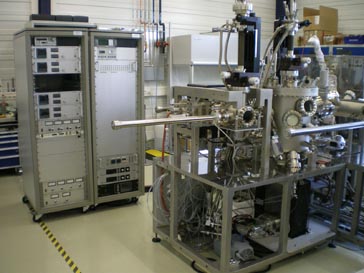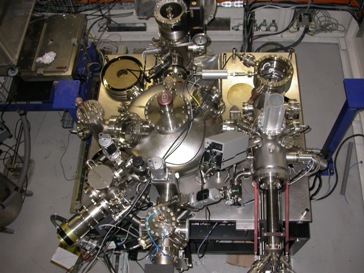The activities of our group are focused on growth and systematic investigation of the influence of structure, size, strain, and shape on the lattice dynamics, thermodynamic, and elastic properties of epitaxial rare earth based nanostructures.
This research is motivated by the observed significant modifications in the lattice dynamics of nanoscale materials with respect to that of the bulk counterparts. It is expected that the thermal lattice excitations (phonons) will play an important role for the performance, lifetime, and thermodynamic stability of the near-future nanodevices consisting of single atomic layers of material. Therefore, for nanotechnological applications it is mandatory to get fundamental and comprehensive understanding of the lattice dynamics in order to better control and even tailor thermal and elastic properties at the nanoscale.
Nanostructures based on the rare earth metals play an important role in various fields such as micro and nano electronics, catalysis, and magnetism. Particularly important are the thin rare earth oxide films selected to replace SiO2 in the CMOS technology due to their high dielectric constants (high-k materials). This allows one to push the sizes of the devices to ever smaller dimensions.
In our research we combine state of the art surface science techniques with in-situ synchrotron radiation scattering and spectroscopic methods at large scale facilities such as ESRF (Grenoble), PETRA III (Hamburg), and KIT Light Source (Karlsruhe).

The rare earth growth and characterization UHV system at the UHV-Analysis lab at KIT Light Source, Karlsruhe

The UHV system for in-situ nuclear resonance scattering experiments at ID18 of the ESRF, Grenoble




